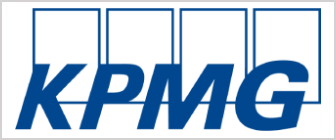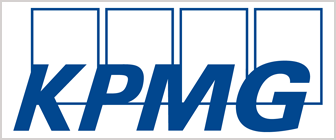What happened & key impact:
In May 2023, the Directive (EU) 2023/970 of 10 May 2023 (hereafter the “Directive”) on the transparency of remuneration was adopted. This Directive aims to take a further step towards gender equality in terms of remuneration by introducing new reporting requirements for employers, directly impacting employers in relation to their recruitment and talent management processes, remuneration policies, as well as more general internal day-to-day operations.
Context
A proposal for a directive on the transparency of remuneration was submitted in March 2021. In May 2023, the new EU directive on pay transparency was passed, following the European Commission’s observation that voluntary initiatives taken by companies were not enough to narrow the gender pay gap having been reduced from 16.4% in 2012 to 12.7% in 2021.
The Directive establishes certain minimum requirements to reinforce the application of the principle of equal pay for men and women for equal work or work of equal value enshrined in Article 157 of the Treaty on the Functioning of the European Union and the prohibition of discrimination laid down in Article 4 of Directive (EU) 2006/54/EC.
This Directive significantly impacts employers' obligations in terms of transparency and reporting, as well as allowing employees to be better informed about employers' pay policies and aiming to reduce the pay gap between individuals for the same position.
Scope of the Directive
The Directive should apply to all workers having an employment relationship under the law of the member state in which they are located.
In addition, the Directive also applies to job applicants who shall have the right to receive from the prospective employer information about the initial pay or its range, as well as the objective criteria on the basis of which such pay (or range) is based on.
Such information shall be provided by the prospective employer in a manner to ensure an informed and transparent negotiation on pay, such as in a published job vacancy notice, prior to the job interview. This Directive shall enter into force on May 30th, 2023. Member States shall bring into force the laws, regulations, and administrative provisions necessary to comply with this Directive by June 7th, 2026.
A reinforcement of employees' rights
In addition to tackling gender equality, the Directive also seeks to strengthen employee’s and even job applicants’ rights. Employers will be required to provide applicants with all the necessary information on remuneration prior to the job interview.
Employees will have the right to request and receive in writing information on their individual pay levels and on average pay levels within the company. The information shall be provided in a format which is accessible to persons with disabilities, and which takes into account their particular needs.
Finally, another flagship measure is the enhancement of employees’ rights, providing for the reversal of the burden of proof of discrimination in two cases:
- if the employer has not implemented its obligations in terms of salary transparency
- if the employee “establishes facts from which it may be presumed that there has been direct or indirect discrimination"
Reporting obligations
The Directive obliges employers to report data relating to the pay gap between women and men, including variable and additional components of the remuneration schedules. This report must contain specific information listed in the Directive such as the gender pay gap, the median gender pay gap, etc.
After consultation with EU Member States, it has been decided to modulate this obligation based on the number of employees in companies as below:
- Companies with fewer than 100 employees are not concerned by the reporting obligations but encouraged to follow it on a voluntary basis;
- Companies with 100 to 149 employees shall issue their first report by June 2031 and every three years thereafter;
- Companies with 150 to 249 employees, shall issue their first report by June 2027 and every three years thereafter; or
- Companies with 250 employees or more, shall issue their first report by June 2027 and every year thereafter.
Should the results of the report not be satisfactory, employers in cooperation with their workers’ representatives will have to issue a joint pay assessment. A non-satisfactory report could be triggered if all the following below conditions are met:
- The pay reporting demonstrates a difference in the average pay level between female and male workers of at least 5% in any category of workers
- The employer has not justified such a difference in the average pay level based on objective, gender-neutral criteria
- The employer has not remedied such an unjustified difference in the average pay level within six months of the date of submission of the pay reporting
The joint pay assessment aims to identify, remedy and prevent differences in pay between male and female employees that are not justified on the basis of objective, gender-neutral criteria. The joint pay assessment will include (but is not limited to) an analysis of the proportion of female and male workers in each category of workers, measures to address differences in pay if they are not justified on the basis of objective, gender-neutral criteria, any differences in average pay levels between female and male workers in each category of workers, etc.
Requirement for gender-neutral pay structures and job classification
The Directive requires pay structures which ensure equal pay for equal work or work of equal value. In order to reach that objective, employers will have to implement gender-neutral job evaluation and classification systems that exclude any discrimination based on sex.
To do so, performing a proper appraisal of the value of work is key. To this end, the Directive provides a list of objective criteria that should be used to assess and compare the value of work, and notably mentions elements such as educational, professional, training requirements but also skills, effort, responsibilities and working conditions, as well as any other factors relevant to the job or position concerned.
The Directive obliges employers to put in place new internal procedures that were perhaps not previously in place, or sufficient compared to the new requirements, to ensure that there are no gender-based pay differences arising between workers performing the same work or work of equal value.
You can review the original news piece here.


